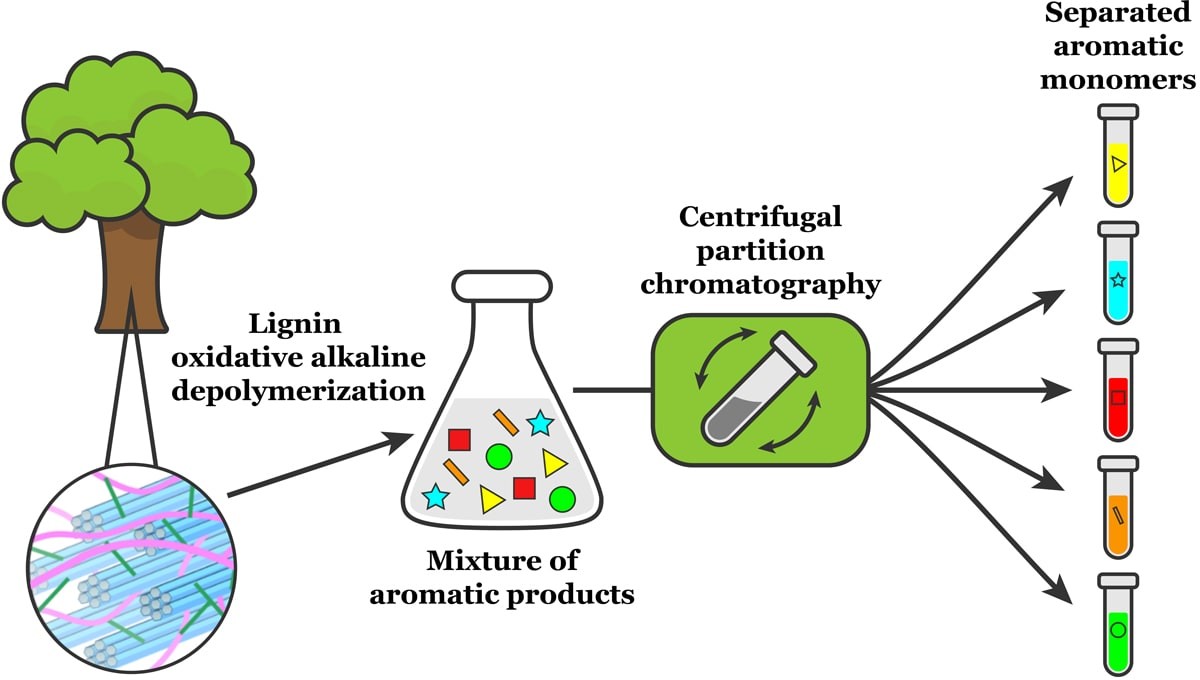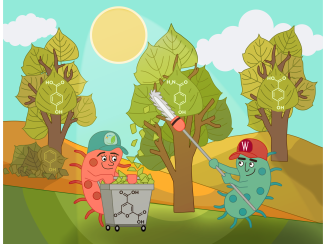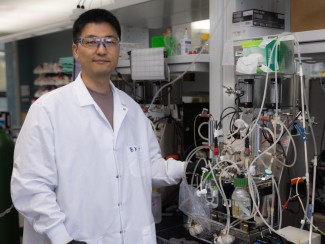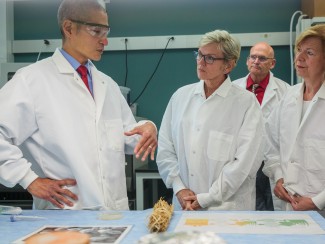
The ability to collect individual useful chemicals may increase the value derived from biomass processing.
The Science
Current methods used to convert plant sugars into biofuels leaves behind the complex polymer lignin as a waste product. Extensive efforts are underway to convert lignin into valuable compounds that could be used in the food, pharmaceutical, or chemical industries. Lignin processing yields a complex mixture of products with little direct market value. In a new study, a team from the Great Lakes Bioenergy Research Center (GLBRC) describes a multi-solvent extraction process that can isolate five major products obtained from poplar lignin.
The Impact
Methods to isolate individual aromatic monomers from a complex product stream, such as that produced by breaking down lignin, will increase the potential value of biofuel crops. Previous purification efforts have typically focused on isolating a single compound, such as vanillin. The method introduced in the new study separates five individual compounds, requires only a few steps, uses no expensive added chemicals, and can be adapted to large-scale use.
Summary
The researchers used a liquid-liquid extraction process called centrifugal partition chromatography, which separates individual monomers from a mixed solution based on the different solubility of each compound in two non-mixing solvents.
The GLBRC team started with lignin extracted from poplar using a copper-alkaline hydrogen peroxide pretreatment process developed in the GLBRC. They digested the lignin in the presence of oxygen gas to break it down into a mixture of oxygenated aromatic compounds, including the useful industrial chemicals vanillin and p-hydroxybenzoic acid. The researchers then applied the centrifugal partition chromatography to the mixture and found they could successfully isolate vanillin, syringic acid, syringaldehyde, vanillic acid and p-hydroxybenzoic acid in two stages of extraction.
These findings suggest that centrifugal partition chromatography can provide a scalable way to isolate valuable industrial chemicals from lignin and other biomass-derived feedstocks.
Program Manager
N. Kent Peters
Program Manager, Office of Biological and Environmental Research
kent.peters@science.doe.gov, 301-903-5549
Corresponding Author
Shannon Stahl
University of Wisconsin–Madison
stahl@chem.wisc.edu
Funding
Financial support for this project was provided by the Great Lakes Bioenergy Research Center, U.S. Department of Energy, Office of Science, Office of Biological and Environmental Research (award DE-SC0018409), the National Science Foundation (grant CHE-1048642) for use of a Bruker AVANCE 400 NMR spectrometer, and the Bender Fund for use of a Bruker AVANCE III 500 NMR spectrometer.
Publication
Alherech, M., Omolabake, S., Holland, C.M., Klinger, G.E., Hegg, E.L., Stahl, S.S., “From lignin to valuable aromatic chemicals: lignin depolymerization and monomer separation via centrifugal partition chromatography.” ACS Central Science (2021) [DOI: 10.1021/acscentsci.1c00729]
Related Links
https://pubs.acs.org/doi/10.1021/acscentsci.1c00729





